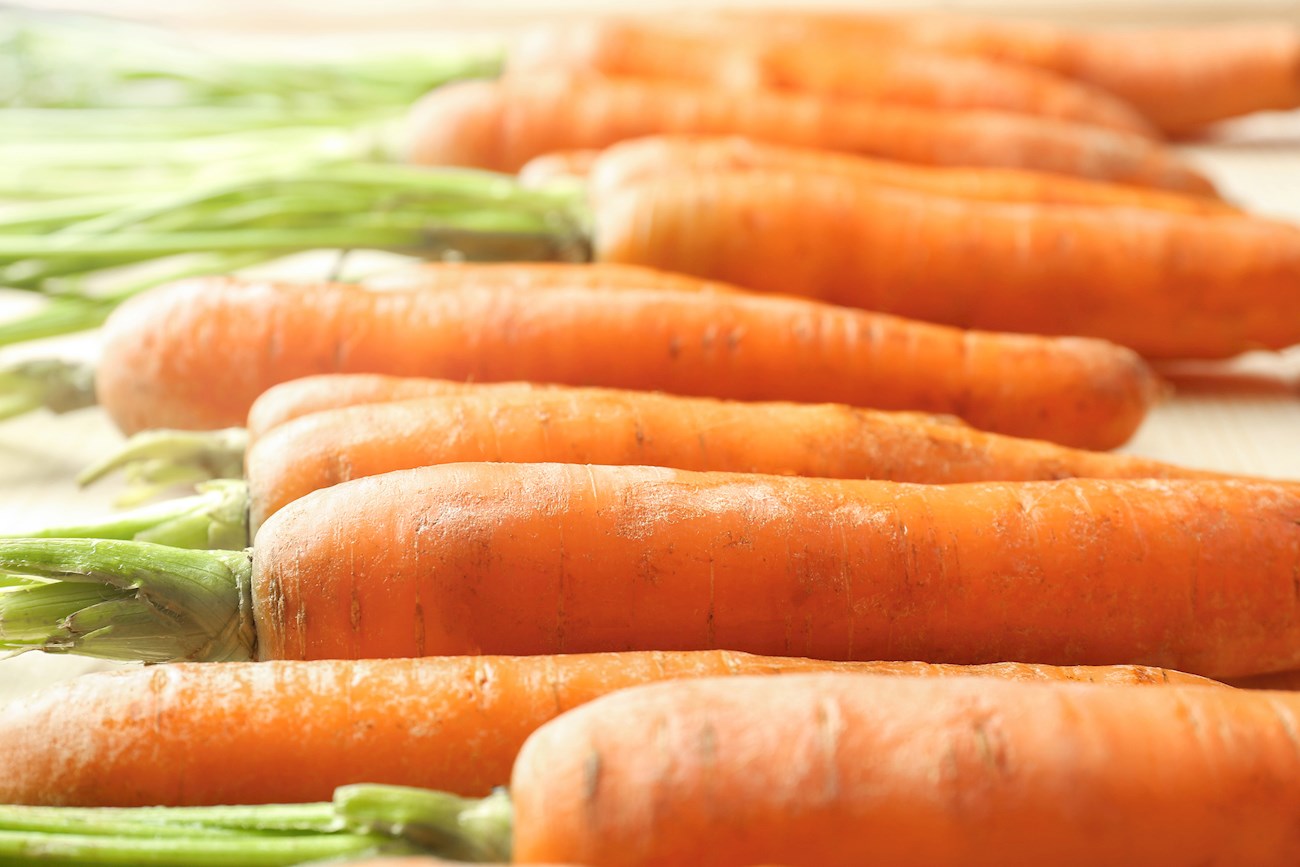Best European Carrot Types
Lammefjordsgulerod is a variety of carrot unique for its very high carotene and sugar content. It is extremely smooth and crisp and has low chances of discoloration when washed. The carrots are produced in the Lammefjord area in Odsherred on Zealand in Denmark, on a seabed that has a layer of silt, giving the vegetables their unique characteristics and a taste that comes from millenniums of deposits of dead plants, shells and animals in the seabed.
After the harvest, which is done by hand, the carrots are washed and packed under strict quality controls and sold depending on their length, short, medium or large, and their age - young, medium or late carrots. They can be eaten either raw or cooked and make an excellent addition to salads, various cooked dishes or cakes.
Fertőd vidéki sárgarépa is a Hungarian carrot variety originating from the Győr-Moson-Sopron County in Hungary’s Western Transdanubia region. The carrots are cylindrical in shape and the root is bright red, smooth, unbranched, and long, without any cracks.
The flavor is slightly sweet and intense, making it different from most of the other carrot varieties. The soil on which these carrots grow is deep-layered, loose, and fresh, allowing the vegetables to grow smooth and deep roots. The region has abundant sunshine from spring to autumn, and the sunshine promotes sugar formation, which is the reason why these carrots have a unique and sweet flavor.
Carote di Polignano is a traditional carrot variety originating from the Polignano area in the province of Bari. These carrots range in color from pale yellow over deep orange to dark purple. The seeds are selected by the growers who plant them in small plots and choose the best plants.
The carrots are replanted between August 15 and September 15, while the harvest takes place from the first week of November until early May. The flavors of these carrots are extraordinary due to the sandy fields with high salinity in which they are grown.
This purple carrot with yellow stripes has been cultivated around the city of Tiggiano since ancient times, and it is still very popular thanks to its juicy, crunchy texture and fragrant flavor. Sometimes called pestanaca or carota di sant'Ippazio (named after the patron saint of Tiggiano), it is a pretty sensitive variety that requires particularly rich soil with high phosphate content, fertilization, and irrigation twice a day.
It should be hand-picked to avoid unnecessary damage, then consumed in a day or two because it loses its turgidity very quickly. Carota giallo-viola is a key ingredient in many local specialties such as ravioli with pestanaca or pestanaca cake, and the best opportunity to try all those delicacies is during the annual Festival of pestanaca, held every January in Tiggano.
In the Italian province of L'Aquila, the cultivation of Altopiano del Fucino carrots began in the 1950s. The Fucino basin is nestled between the high Apennine peaks, at an altitude of 700m, and it seems almost unreal that this huge plateau used to be covered with water.
However, having no natural outflow and repeatedly flooding the surrounding arable land, the once third largest lake in Italy was drained in 1878. Today, Fucino is a fertile valley planted with vegetables thriving in the humus-rich soil. Formed from the organic matter found at the bottom of the lake, this soil is exactly what gives the vitamin and protein packed Fucino carrots their distinctively sweet flavor.
The cultivation of Carota Novella di Ispica began in the 1950s in Syracuse, but later the production spread to the neighboring province of Ragusa, particularly around the town of Ispica, where this variety of carrots is grown even today.
They are obtained by cultivating the Daucus carota subspecies Sativus Arcangeli, while the varieties used are derived from the Nantes semi-long carrot group and their hybrids. The Ispica carrots ripen quite early and reach their full market maturity from as early as the end of February up to the beginning of June.
Because of its delicate flavor, and a fresh herbal aroma, Carota Novella di Ispica is best enjoyed raw, in salads or various crudité platters, but it is widely used in cooking as well.
Begečka šargarepa is a Serbian type of carrot originating from Begeč. The carrots are cultivated from the Daucus Carota L variety. They have an intense orange color, and the flesh is crunchy, dense, slightly sweet, and rich in flavor. Suitable climate and soil conditions are great for carrot cultivation in the area, a practice that dates back to 1927.
The Begeč area is well-known for the production of carrots, as well as potatoes. Nowadays, local farmers produce so much Begeč carrots that one can see vast light green carrot fields near the village, and many of those carrots are exported to other countries as well.
Carota di Zapponeta is a traditional agricultural food product from the Apulian province of Foggia. These sweet and crunchy carrots are harvested between January and March, but when properly stored and protected from the moisture, they can hold their nutrient content and remain fresh for several months.
Due to their tenderness and sweetness, they are best enjoyed raw, but they can also be boiled, stewed, or fried.
TasteAtlas food rankings are based on the ratings of the TasteAtlas audience, with a series of mechanisms that recognize real users and that ignore bot, nationalist or local patriotic ratings, and give additional value to the ratings of users that the system recognizes as knowledgeable. TasteAtlas Rankings should not be seen as the final global conclusion about food. Their purpose is to promote excellent local foods, instill pride in traditional dishes, and arouse curiosity about dishes you haven’t tried.







